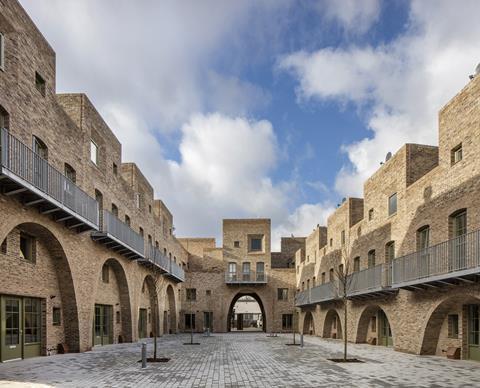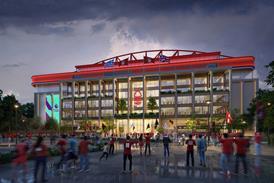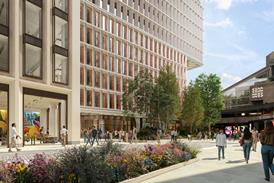Policy Exchange report calls for new social housing boom which learns from ‘traumatic’ legacy of brutalist post-war estates
Britain needs to build 100,000 council homes a year and to ensure beauty in their design, according to a new report backed by MPs from both sides of the House of Commons.
The Policy Exchange, an independent right-leaning think tank, said a huge boost in social housing delivery would ease pressure on public finances by removing the most economically disadvantaged from the private rental market.

Spending on housing benefit payments was nearly £29bn in 2019-20 and could reach £71bn by 2050 if recent trends in rent hikes and population increases continue, the report said.
The report says adoption of national or local design guides for council housing should make local authorities eligible for increased funding to support the construction of new social rent schemes. It also proposes a compulsory flat rate and locally set Infrastructure Levy to strengthen councils’ fiscal positions.
It also called bodies responsible for the delivery of council housing to “accept that beauty is important” and for new schemes to learn from the “traumatic” legacy of brutalist estates which characterised social housing in the 1960s and 70s.
Politicians who have backed the 128-page report include Labour MPs Danny Beale and Margaret Mullane and Conservative MPs Kevin Hollinrake, former housing minister, and David Simmonds, shadow minister for housing.
It has also been backed by Labour peer Maurice Glasman, founder of the Blue Labour campaign group and former Labour MPs Jon Cruddas and Ruth Kelly.
If adopted by the government, the policies proposed in the report would see a huge uplift in the delivery of council housing compared to current levels. The government’s £39bn Affordable Homes Programme will support 180,000 social rent homes over ten years, potentially providing 18,000 units a year for the next decade.
The think tank said the government “can and must go much further” with capital investments in council housing aiming to reduce the public cost of subsidising private landlords through housing benefits.
The UK’s council housing stock has declined dramatically in recent decades from 28% of all housing stock in 1969 to just 6% in 2023.
While the 1980s Right to Buy policy has played a role in this decline, the report laid most of the blame in the failure to replace what had been sold. In 1954 just under 70% of all new homes built in the UK that year were built by local authorities, compared to just 2% In 2022.
The report’s nine key recommendations include a new ‘Requirement to Build’, proposing primary legislation which would impose a statutory requirement on councils to build one council home for every council home sold.
But the recommendations also called on the government to ensure quality as well as quantity with a new National Design guide for Council Housing, which would be used by local authorities when designing new social rent schemes.
Recommending diversity in design, the report heavily criticised the “near-militaristic totalitarian repetition” of post-war council housing, which it said had “served to crush the nuance, spontaneity and individuality that not only represents the human condition but generates the most liveable places”.
While the paper has not sought to define what is considered beautiful, it argued the legacy of post-war council estates had shown what happens “when the state does not consider beauty to be important”.
>> Also read: Why building a culture of viability is key to safeguarding quality in major housing programmes
>> Also read: Designing tomorrow’s housing: why lived experience must shape our drive for new homes
















No comments yet